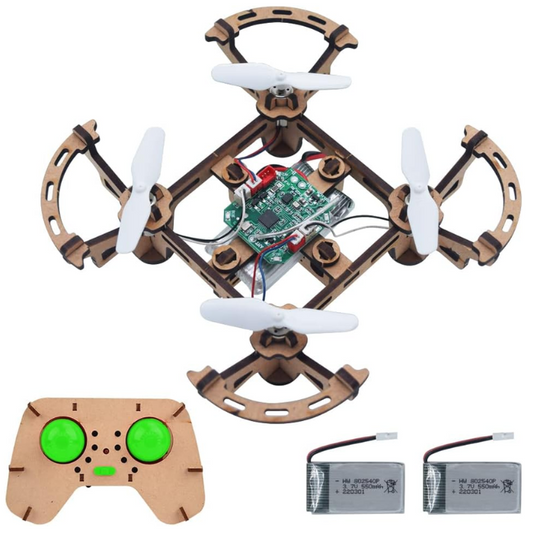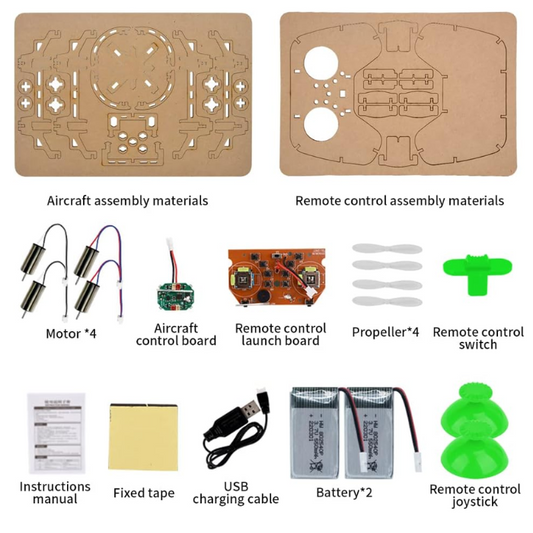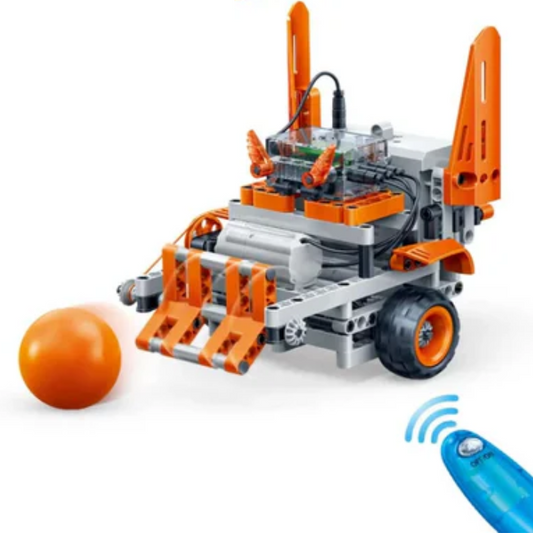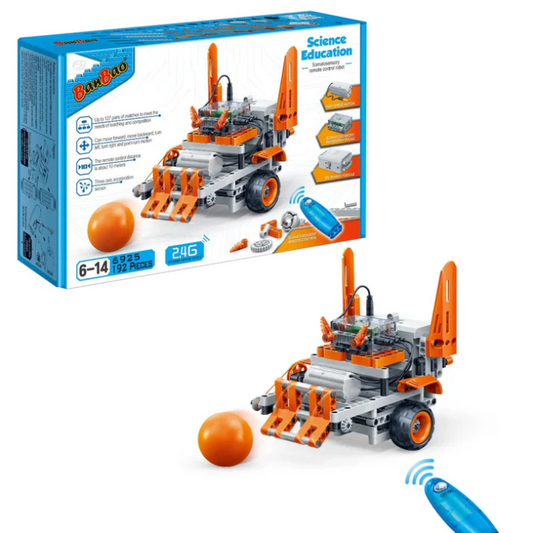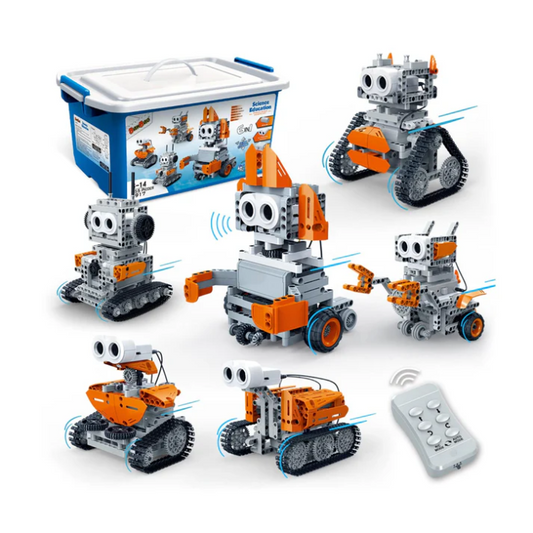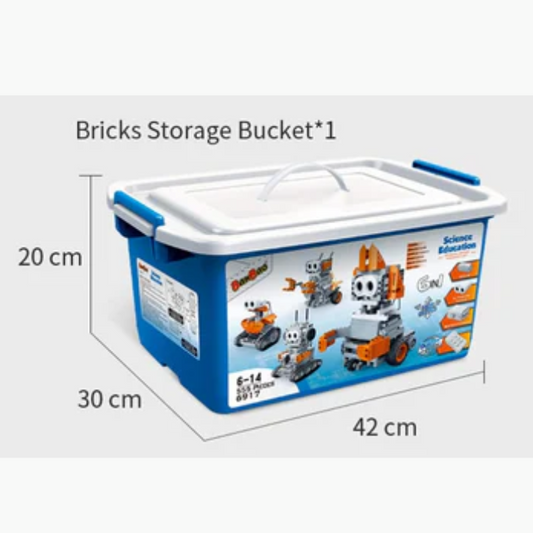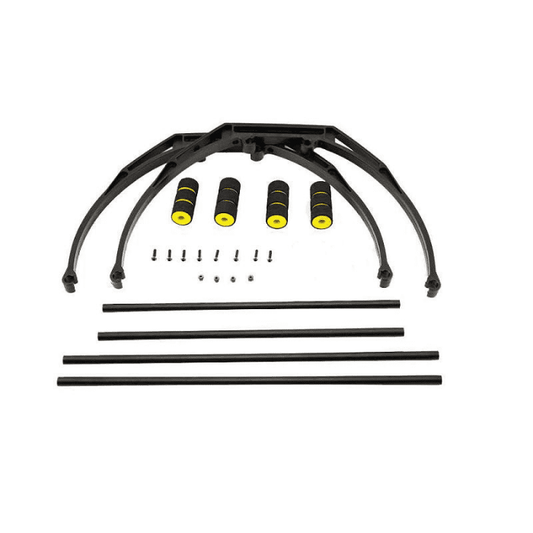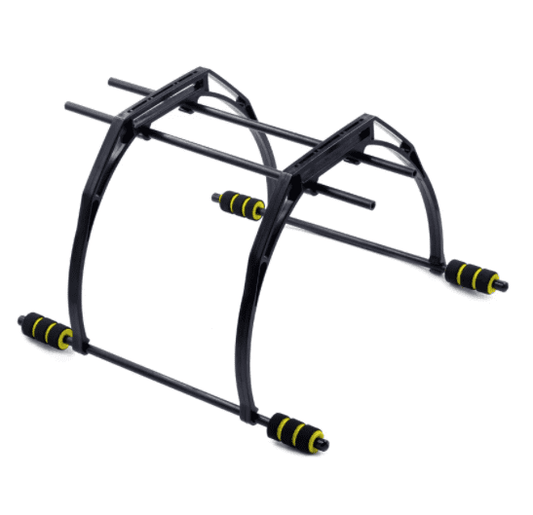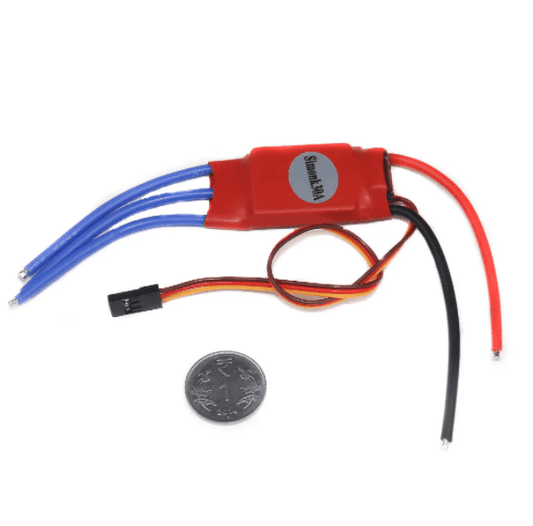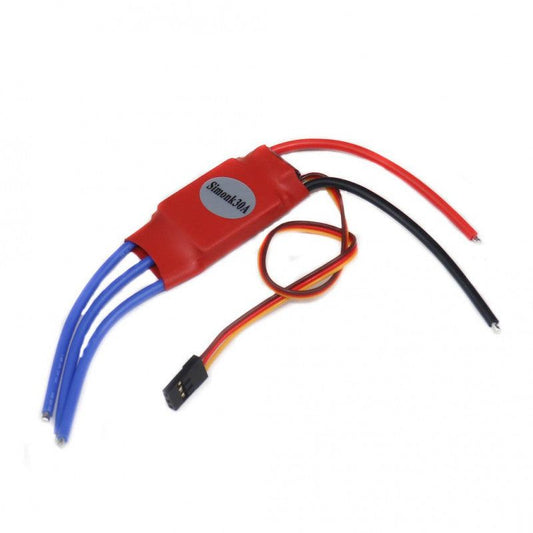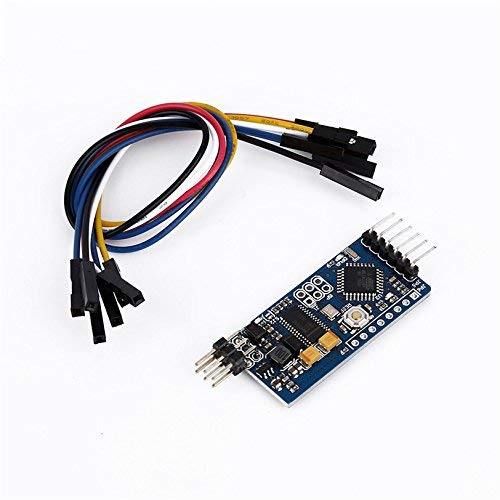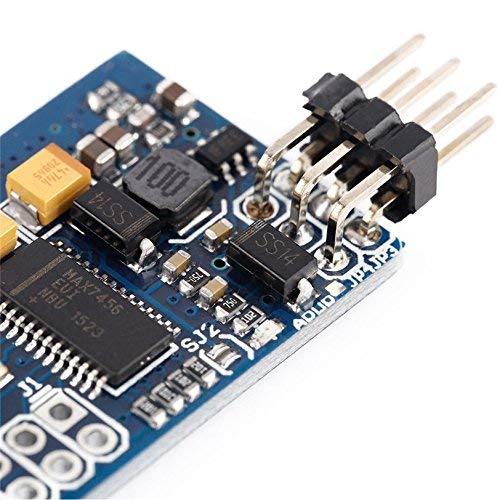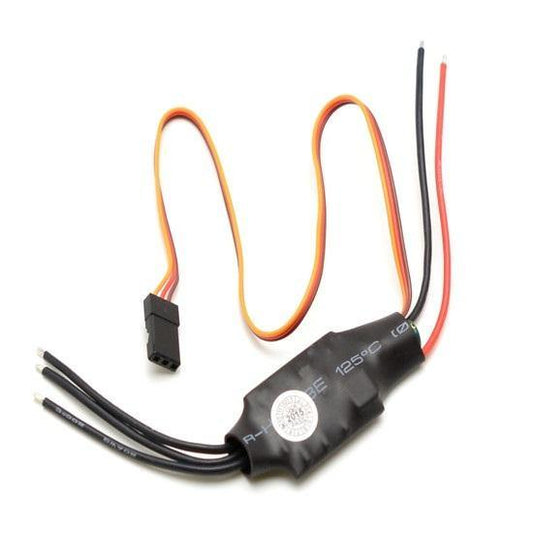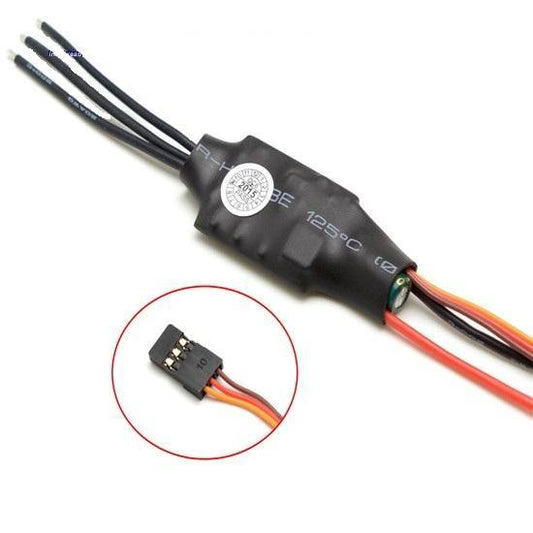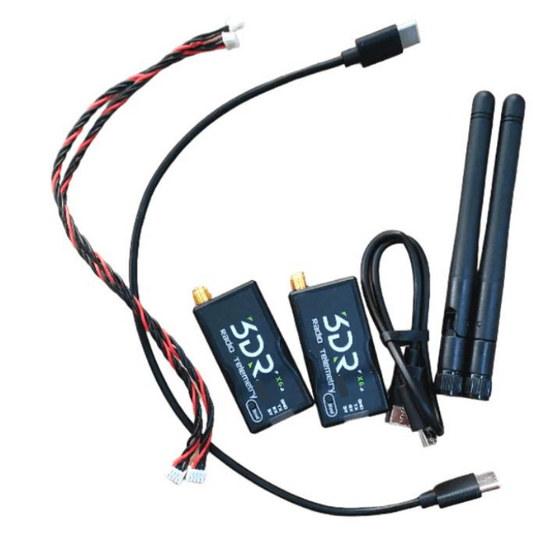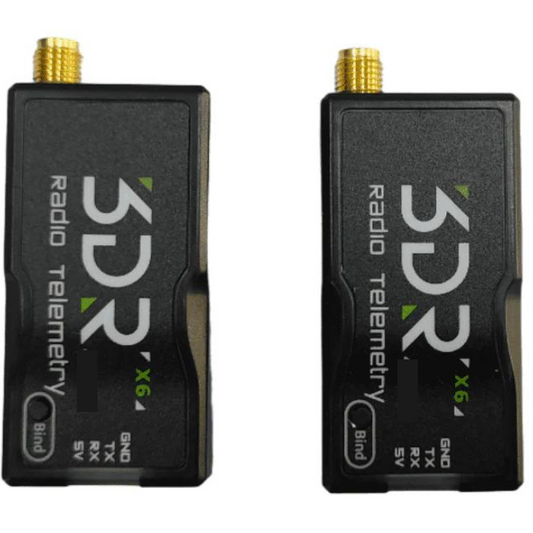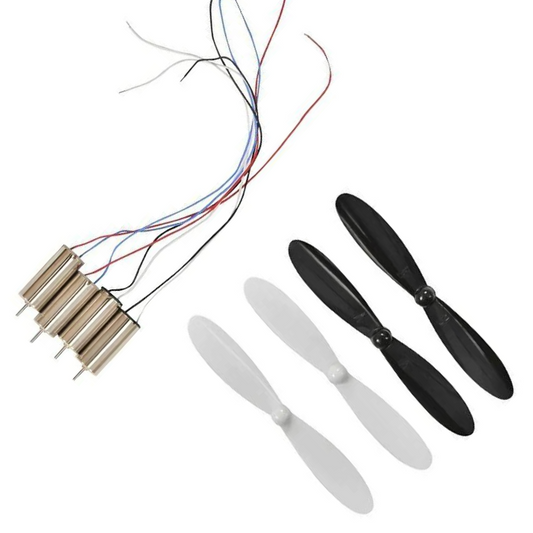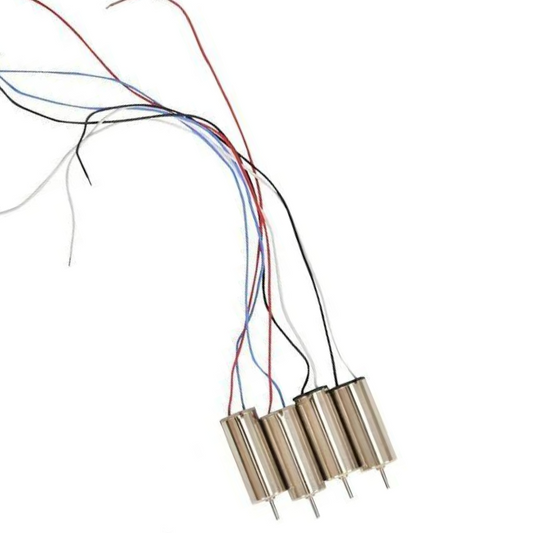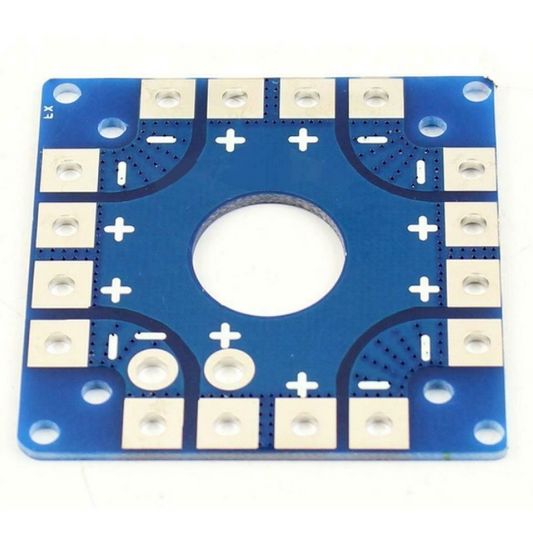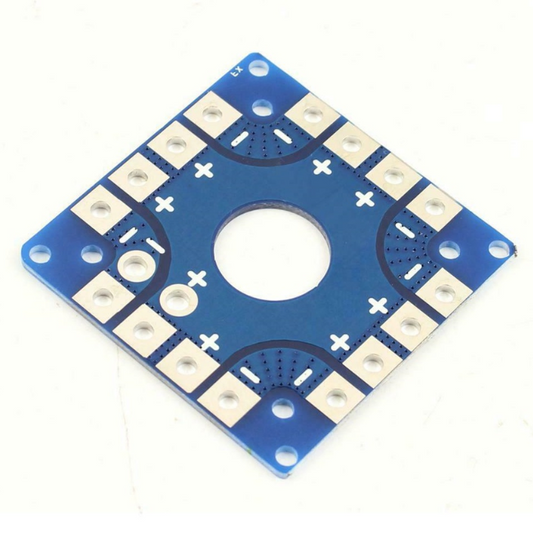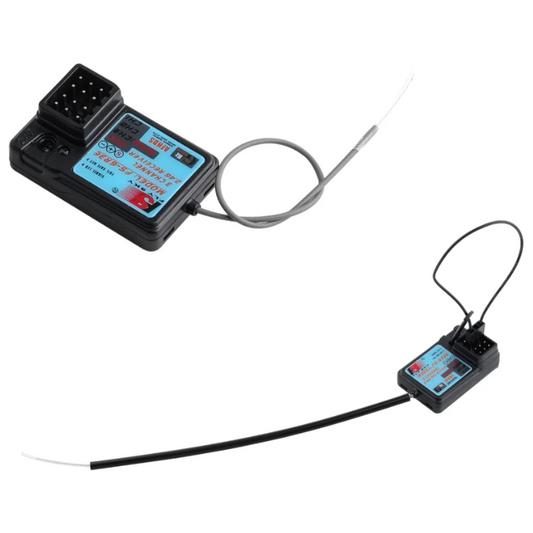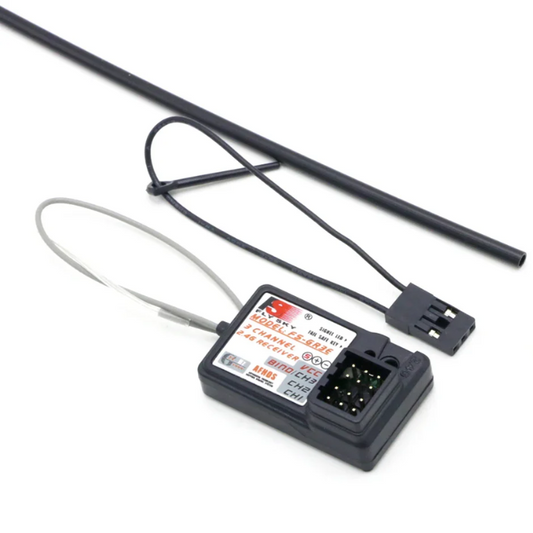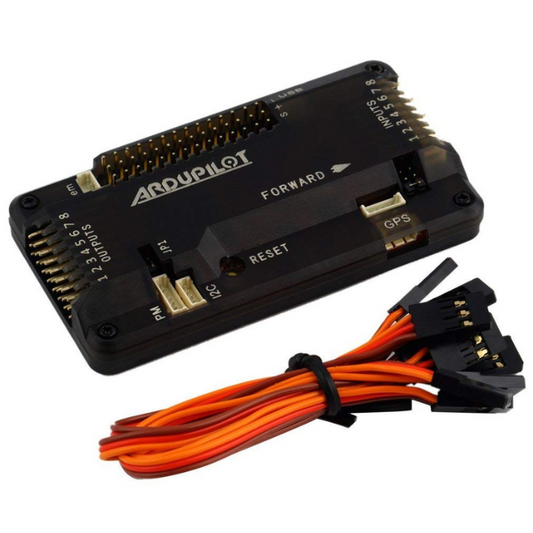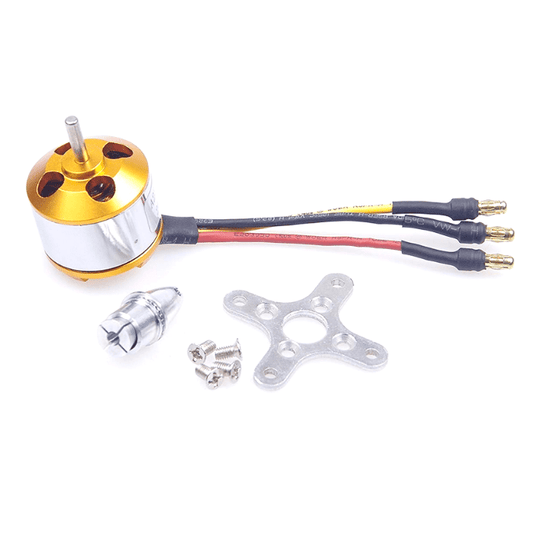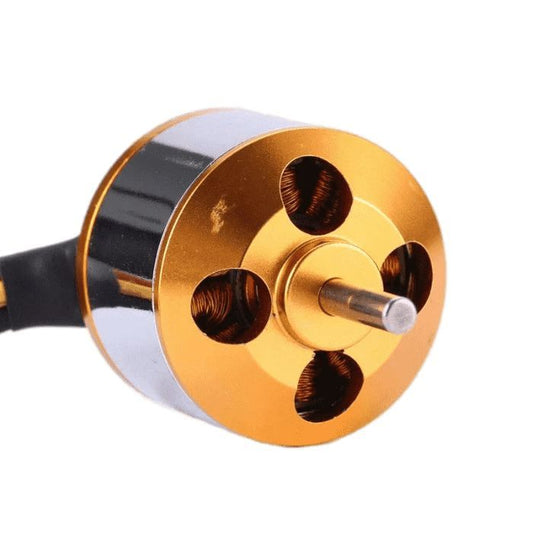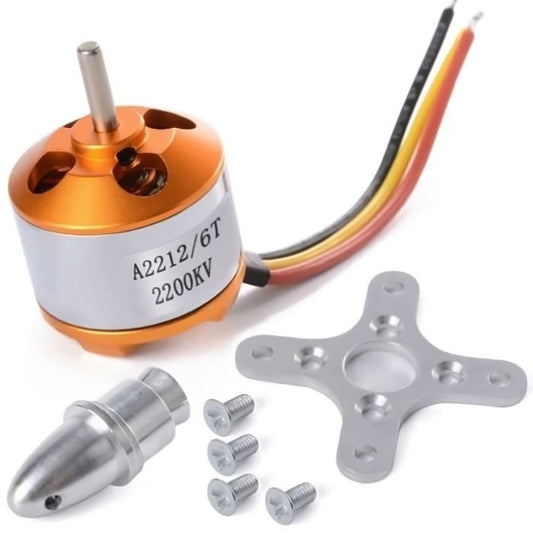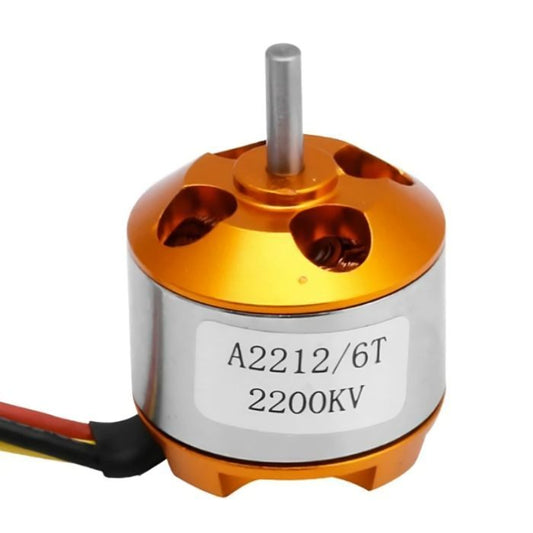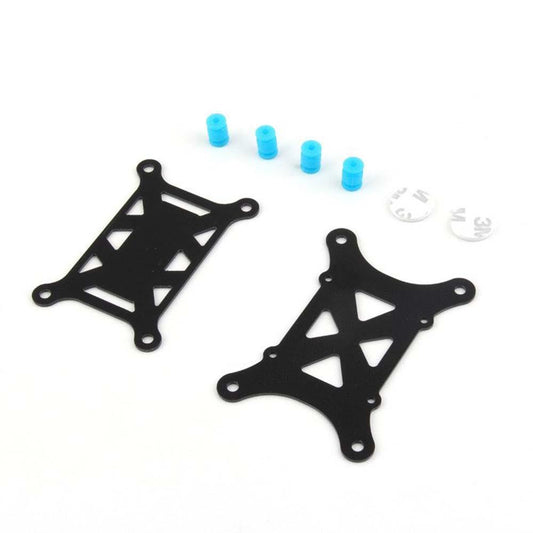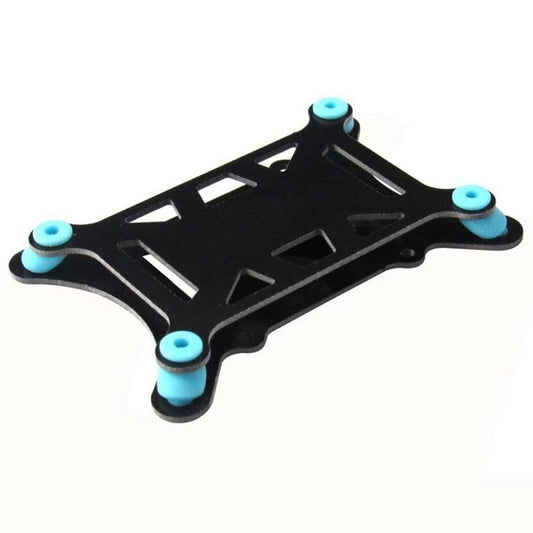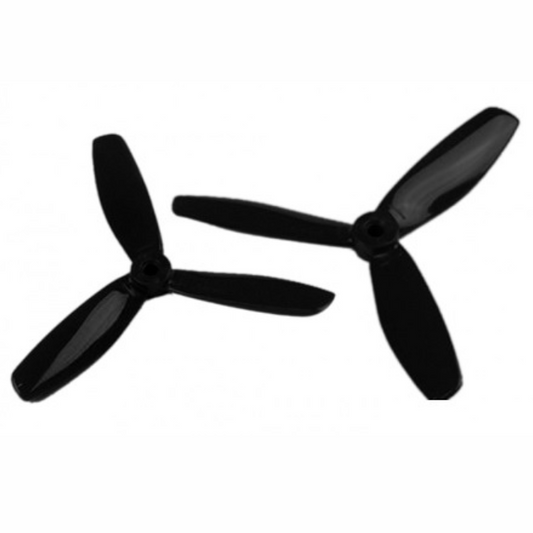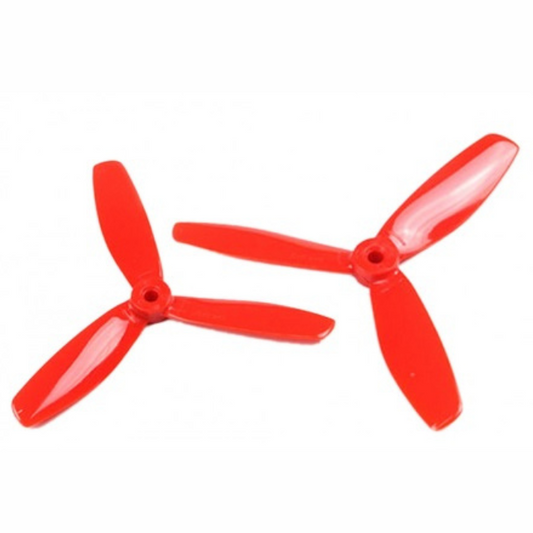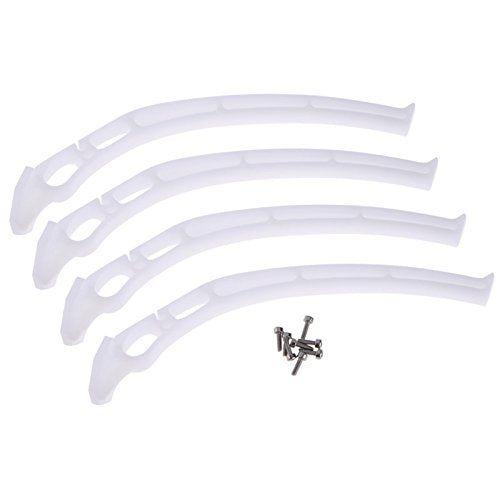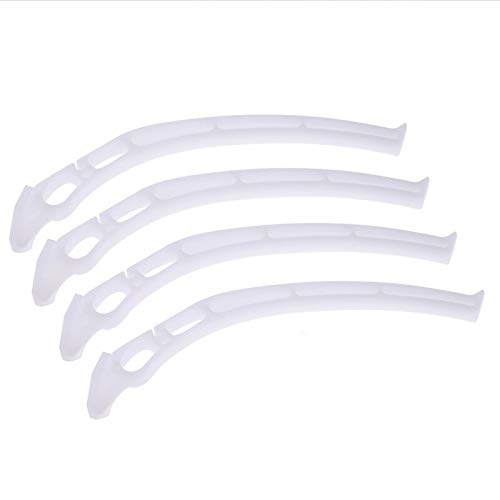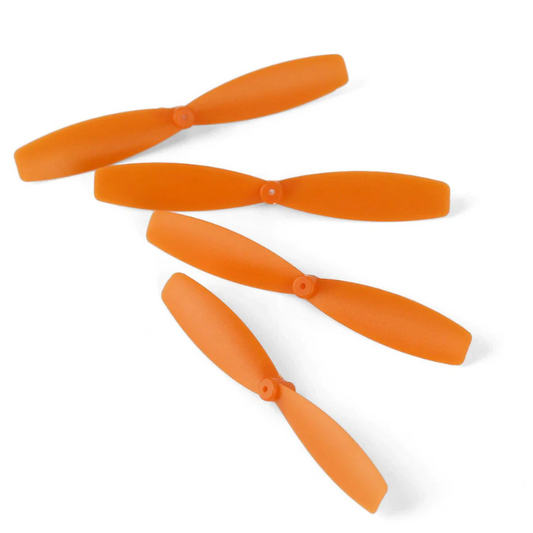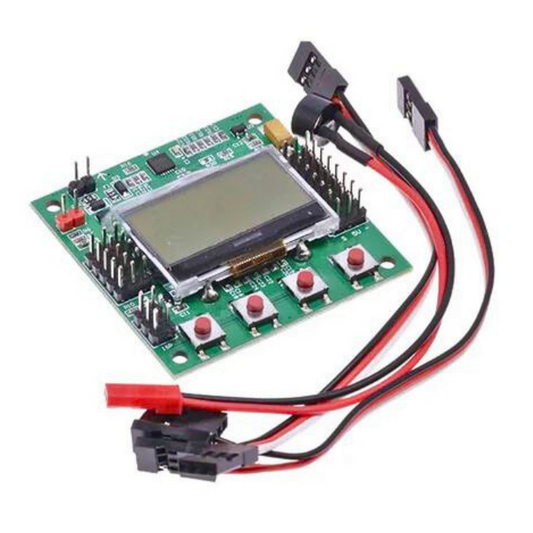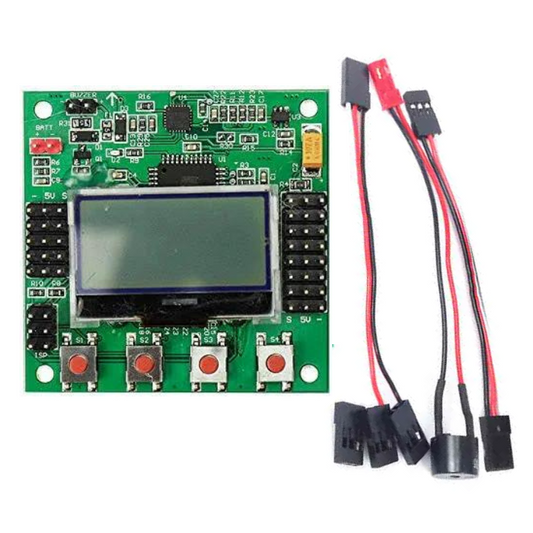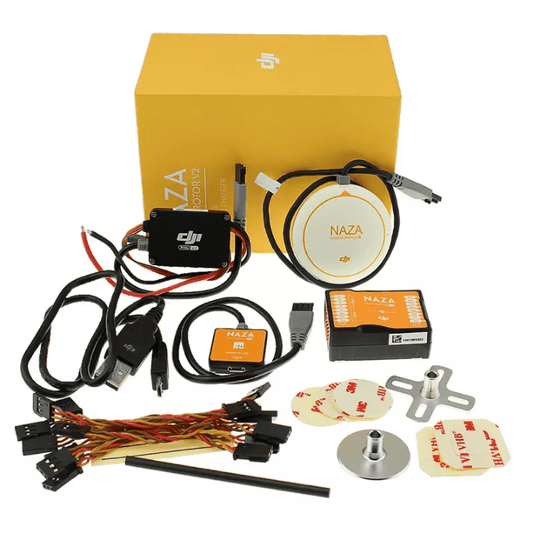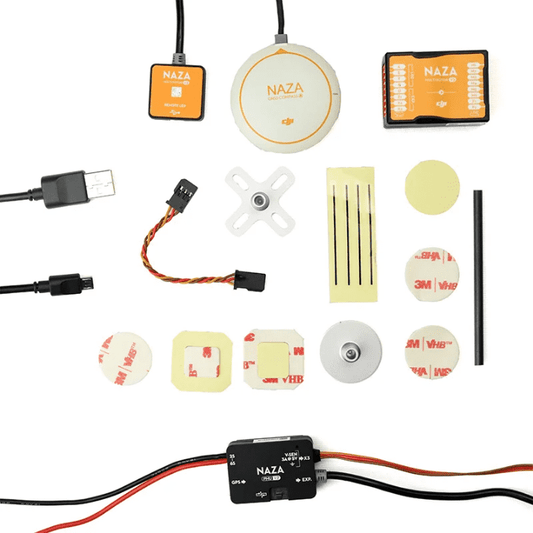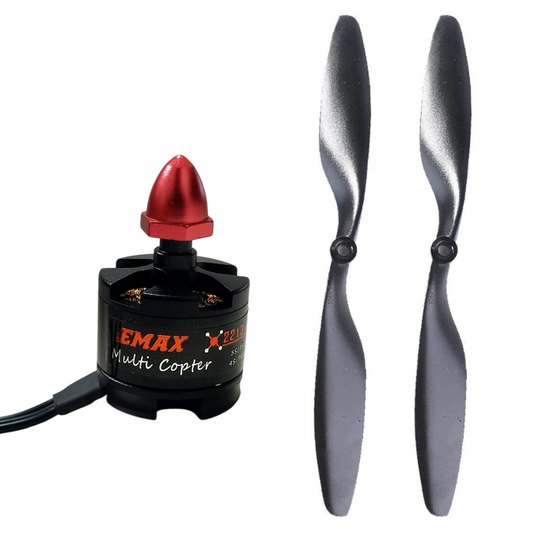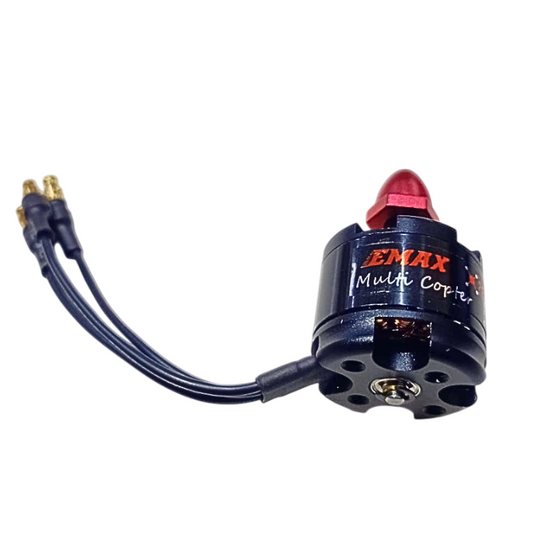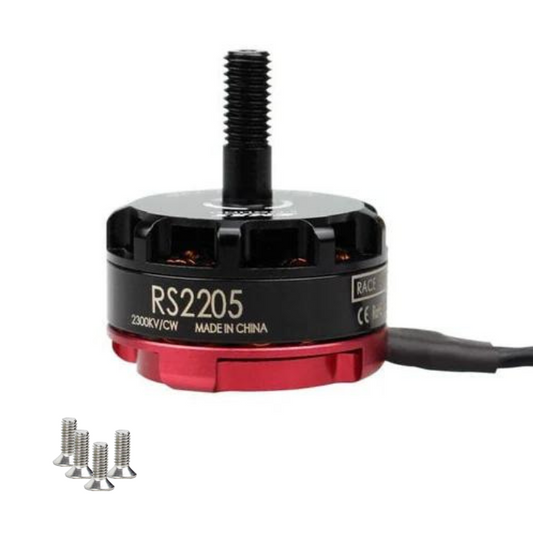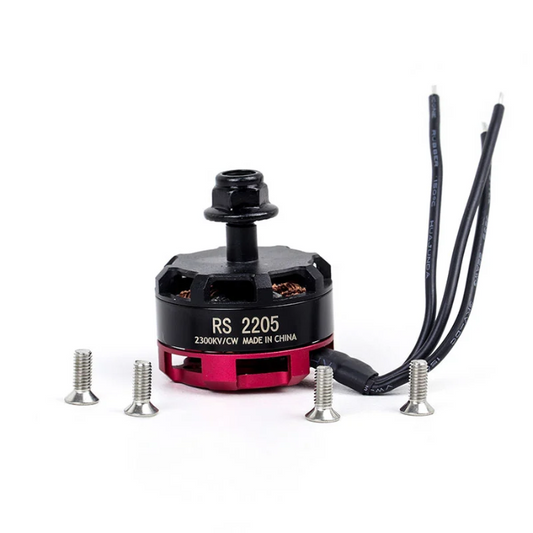- 10
- 15
- 20
- 25
- 30
- 50
- Featured
- Best selling
- Alphabetically, A-Z
- Alphabetically, Z-A
- Price, low to high
- Price, high to low
- Date, old to new
- Date, new to old
Sort by:
- Featured
- Best selling
- Alphabetically, A-Z
- Alphabetically, Z-A
- Price, low to high
- Price, high to low
- Date, old to new
- Date, new to old
-
F450/F550 Quadcopter High Landing GearF450/F550 Quadcopter High Landing Gear The landing gear adds extra protection to your flying platform and all other precious equipment. This protection is available at no cost when compared with the cost of all the accessories that you ride on your multirotor. The F450 F550 Frame Landing...
- Rs. 452
Rs. 534- Rs. 452
- (-15%)
- Unit price
- / per
Save Rs. 82 -
Simonk Red ESC 30A without Connector for QuadcopterSimonk Red ESC 30A without Connector for Quadcopter The Simonk 30A ESC is an Electronic Speed Controller (ESC) that is used to drive brushless DC motors and is capable of supplying current up to 30A. The 30A Simonk controller is made for quadcopters and...
- Rs. 331
Rs. 591- Rs. 331
- (-44%)
- Unit price
- / per
Save Rs. 260 -
Mini OSD Module For 2.6 APM PIX Pixhawk Flight Control BoardMini OSD Module For 2.6 APM PIX Pixhawk Flight Control Board APM has an companion OSD board called MinimOSD. It reads all the MAVLink data in the APM telemetry stream and overlays it on the video stream if you’re using an on-board camera and...
- Rs. 1,049
Rs. 1,399- Rs. 1,049
- (-25%)
- Unit price
- / per
Save Rs. 350 -
SimonK ESC 12ASimonK ESC 12A This is the Simonk 12A is a great ESC product DIY Drone enthusiasts and quadcopters. This 12A Brushless ESC motor supports 1-3S Small Axis. This Simonk ESC 12A ESC motor is optimized to achieve the perfect driving effect With low voltage protection, and over-temperature protection. ...
- Rs. 545
Rs. 799- Rs. 545
- (-32%)
- Unit price
- / per
Save Rs. 254 -
3DR Radio Telemetry 915 MHz3DR Radio Telemetry 915 MHz This 3DR 915 MHz Radio Telemetry kit set allows you to connect a flight controller and a USB or UART-enabled device, such as a computer, laptop, or tablet with USB compatibility (OTG).The latest version 2 radios no longer require...
- Rs. 5,625
Rs. 7,499- Rs. 5,625
- (-25%)
- Unit price
- / per
Save Rs. 1,874 -
Coreless Motor and Propeller(8x20mm)(Pack of 4)Coreless Motor and Propeller(8x20mm)(Pack of 4) These are Coreless motors with propellers, These coreless motors are exactly what you need if you want to build your own small-scale Quadcopters, Drones, helicopters, and RC planes. It is very small in size and in terms of producing thrust...
- Rs. 533
Rs. 699- Rs. 533
- (-24%)
- Unit price
- / per
Save Rs. 166 -
100A Multirotor ESC Power Distribution Battery Board For Quadcopter100A Multirotor ESC Power Distribution Battery Board For Quadcopter The 100A Multirotor ESC Power Distribution Battery Board For Quadcopter simplifies power distribution for your drone, ensuring a streamlined and efficient connection. Crafted from lightweight glass fiber, this board is designed for smaller multirotor builds...
- Rs. 141
Rs. 249- Rs. 141
- (-43%)
- Unit price
- / per
Save Rs. 108 -
FlySky FS-GR3E 2.4G 3CH ReceiverFlySky FS-GR3E 2.4G 3CH Receiver FlySky FS-GR3E 2.4G 3CH Receiver is a new function with a waterproof protection RC receiver, so now you could also enjoy your RC world when rainy or moisture days. The receiver is compatible with many transmitters like FS-GT2, FS-GT2B, FS-GT3B, FS-GT3C...
- Rs. 657
Rs. 867- Rs. 657
- (-24%)
- Unit price
- / per
Save Rs. 210 -
APM 2.8 Flight Controller (Without Compass)APM 2.8 Flight Controller (Without Compass) The APM 2.8 flight controller is an improved version of the APM 2.6 flight controller, suitable for use with DIY quadcopters, drones, helicopters, RC planes, and other UAVs. With its fail-safe programming option, drone enthusiasts can easily address issues...
- Rs. 4,155
Rs. 5,499- Rs. 4,155
- (-24%)
- Unit price
- / per
Save Rs. 1,344 -
A2212 2450KV BLDC Motor for RC Drones and QuadcoptersA2212 2450KV BLDC Motor for RC Drones and Quadcopters This is A2212 (BLDC) Brushless DC Motor of 2450KV, a high-speed brushless motor designed specifically for Quadcopters, Drones, or toy planes. This brushless DC motor is an outrunner-type motor, which means that the outside case...
- Rs. 388
Rs. 725- Rs. 388
- (-46%)
- Unit price
- / per
Save Rs. 337 -
A2212 2200Kv 6T Brushless Outrunner Motor Aircraft Quadcopter HelicopterA2212 2200KV 6T Brushless Outrunner Motor Aircraft Quadcopter Helicopter The A2212 2200Kv BLDC motor is a brushless outrunner motor specifically made for quadcopters and multi-rotors. It provides high performance, superpower, and brilliant efficiency. These brushless DC motors are perfect for medium-sized quadcopters with 8-inch...
- Rs. 371
Rs. 599- Rs. 371
- (-38%)
- Unit price
- / per
Save Rs. 228 -
Anti-Vibration Shock Absorber for APM-KK-MWC-PixHawkAnti-Vibration Shock Absorber for APM/KK/MWC/PixHawk This is a universal Glass Fiber Flight Controller Anti-vibration Set Shock Absorber APM/KK/MWC/PixHawk vibration damping mount that has a list of useful applications, This provides free camera mounting to Flight controller isolation. It absorbs vibration, the center-supported plate is ideal for...
- Rs. 192
Rs. 249- Rs. 192
- (-23%)
- Unit price
- / per
Save Rs. 57 -
5045 3 Blades Drone Propeller CW & CCW - 1 pair5045 3 Blades Drone Propeller CW & CCW - 1 pair The 5045 3 Blades Drone Propeller CW & CCW is a highly durable and flexible set of propellers designed for small multi-rotor drones. Known for their exceptional balancing and precise hub centering, these...
- Rs. 56
Rs. 99- Rs. 56
- (-43%)
- Unit price
- / per
Save Rs. 43 -
High Landing Gear Kit for Quadcopter DroneHigh Landing Gear Kit for Quadcopter Drone The High landing gear kit is a great quadcopter accessory that is compatible with F450 F550 SK480 quadcopter drones. Using the landing gear for a DIY quadcopter kit adds extra protection to your DIY quadcopters during landing...
- Rs. 161
Rs. 199- Rs. 161
- (-19%)
- Unit price
- / per
Save Rs. 38 -
55mm Racing Propeller- Pack of 4- Any Color55mm Racing Propeller- Pack of 4- Any Color The 55mm Racing Propeller, a pack of 4 designed to elevate your flying experience. Crafted with precision and advanced technology, these propellers feature a paddle and anti-paddle design, making them the best choice for fixed-wing aircraft...
- Rs. 57
Rs. 74- Rs. 57
- (-23%)
- Unit price
- / per
Save Rs. 17 -
KK board 2.1.5 Multi-Rotor LCD Flight Control BoardKK board 2.1.5 Multi-Rotor LCD Flight Control Board The KK 2.1.5 Flight controller board is a highly efficient flight controller for drones that is designed to manage the flight of various multi-rotor aircraft, such as Tricopters, Quadcopters or drones, and Hexacopters. Its primary function...
- Rs. 3,964
Rs. 5,499- Rs. 3,964
- (-28%)
- Unit price
- / per
Save Rs. 1,535 -
Original DJI NAZA M V2 Flight Controller With GPS & PMU V2 for Multirotor QuadcopterOriginal DJI NAZA M V2 Flight Controller With GPS & PMU V2 for Multirotor Quadcopter DJI Naza-M V2 Multi-Rotor Flight Controller With GPS Module Supports nine multi-rotor configurations, the DJI NAZA-M V2 Drone Controller With GPS acts as the brains of the aircraft, managing...
- Rs. 20,994
Rs. 23,772- Rs. 20,994
- (-12%)
- Unit price
- / per
Save Rs. 2,778 -
Emax MT2213 920kva Brushless Motor with 1045 Propeller (1 pair)Emax 2213 920kva Brushless Motor with 1045 Propeller (1 pair) The Emax 920kva brushless drone motor comes with an adapter that is specially made to adjust the rotation of propellers in the CCW (counter-clockwise) direction. Multi-Rotor Brushless Motor MT2213-920kva is excellent and designed for Multirotor fast...
- Rs. 1,292
Rs. 1,607- Rs. 1,292
- (-20%)
- Unit price
- / per
Save Rs. 315 -
RS2205 2300KV Brushless DC Motor for FPV Racing Drone Black Cap (CW Motor Rotation) - RS2873/RS4665RS2205 2300KV Brushless DC Motor for FPV Racing Drone CW Motor Rotation If you want to give your FPV racing drone a real upgrade, then we have the perfect solution for you. Check out the latest RS2205 2300KV Brushless DC Motor for FPV —...
- Rs. 775
Rs. 999- Rs. 775
- (-22%)
- Unit price
- / per
Save Rs. 224 -
SKYDROID T12 2.4GHZ 12CH REMOTE CONTROL WITH CAMERASkydroid T12 2.4GHz 12Ch Remote Control with Camera Skydroid was a company that specialized in drone technology, covering areas such as research and development, production, and marketing. It possessed the independent capacity to innovate and develop digital control transmission links, flight control, airframe, pan/tilt,...
- Rs. 28,256
Rs. 34,499- Rs. 28,256
- (-18%)
- Unit price
- / per
Save Rs. 6,243
Drones are widely used for photography, surveying, inspection, and delivery. Their main drone components include the frame, which provides structure, motors for propulsion, and propellers to generate lift.
A battery powers the drone, while the flight controller (FC) acts as its brain, managing stability and movement. Additionally, drone sensors help with navigation, positioning, and obstacle detection, making drones more efficient and autonomous.
Most drones use brushless DC motors (BLDC) because they are lightweight, efficient, and require little maintenance. The Flight Controller (FC) processes data from sensors and adjusts the motors to keep the drone stable and responsive.
Drones rely on various sensors, including GPS for location tracking, gyroscopes and accelerometers for balance, barometers for altitude control, and obstacle detection sensors to avoid collisions. These drone spare parts work together to ensure smooth and precise flight.
4 Types of Drones:
- Single-rotor drones
- Multi-rotor drones
- Fixed-wing drones
- Fixed-wing hybrid VTOL (vertical takeoff and landing) drones
Best Drone Parts Store in India
Robocraze is your one-stop shop for everything drones and UAV components, with competitive prices for mini drone parts and a broad assortment of top-quality components to enhance your drone experience.
Our range includes cutting-edge FPV racing drone kit, DIY drone kit, flight control boards, mighty power distribution boards, and robust landing equipment kits. We provide top-quality LiPo batteries, receivers and transmitters, FPV cameras, and gimbals for an immersive flight experience.
Price Chart of Drone Spare Parts in India
| Parts of Drone | Starting From |
| Drone Frames | Rs. 224 |
| LiPo Batteries | Rs. 1269 |
| Drone Motors, ESC & Propellers | Rs. 131 |
| Flight Controllers | Rs. 1,399 |
Drone Parts List
All parts of drone include:
- Quadcopter frame: This is a structure (frame) in which all the other diy drone parts fit in. The drone frame acts as a skeleton in which different components are placed in such a manner that they uniformly distribute the Drone’s center of gravity.
- Motors: Motors are essential drone accessories for the propeller’s rotation. The drone motor enhances a thrust force for propelling the DIY Drone. Still, the number of motors should be the same as the number of propellers.
- Electronic Speed Controller (ESC): Electronic Speed Controller is an electronic control board that varies the motor’s speed. It also acts as a dynamic brake.
- Flight Control/Board: The drone flight board makes a log of the takeoff place just in case the need arises for the DIY Drone to go back to its takeoff location without being guided. This is known as ‘return to home’ feature.
- Propellers: Drone Propellers are clove like blades structured to create a difference in air pressure. When in motion, they cut through the air creating difference in pressure between the top and bottom of the rotors.
- Radio Transmitter: It is a channeled transmitter and a communicator to the DIY Drone. Each channel has specific frequency capable of steering the DIY Drone in a certain motion. DIY Drone is requiring at least 4 channels for effective operation.
- Battery, Electronics, and Power Distribution Cables: The drone battery acts as the power source to the DIY Drone. It supplies energy in all the electronics in the framework through the power distribution cables.
- Camera: For video footage, cameras are attached to the DIY Drones. Cameras with the capability of shooting and storing or sending videos.
- Landing gear: The drone landing gear is a structure meant for safely landing the DIY Drone. There are two major types of landing gear. One is fixed landing gear, and the other is retractable landing gear.
Related Searches
DIY Drone Kits | Drone Transmitter & Receiver | Drone Controllers | Drone Frame | Drone Motors | LiPo Battery | Drone Accessories | ESC for Drones | Drone Propellers
Popular Searches
M5Stack | Development Boards | DIY Kits | 3D Printers/Pens | IOT & Wireless | Sensors | Motors & Mechanical | Displays | Batteries & Power Supply | Tools & Instruments | Cables & Connectors | Prototyping & Misc
1. How do I choose DIY Drone parts?
There are various types of Components used in a DIY Drone. Choosing Quadcopter parts is easy if you have the basic understanding of quadcopter.
- Choosing a Frame: Quadcopter frames have significant impact on flight performance: aerodynamics, weight distribution, rigidity, etc, all play a part in flight characteristics. A mini DIY Drone frame can be made from any material you can possibly think of: Wood, 3D printed plastic, plastic, fibre glass, aluminium, or even PVC pipes. However, carbon fiber remains the most popular material as it is electrically conductive and blocks radio frequency signals.
The size of a frame determines the choice of most of the components you will use in the build. A more powerful DIY Drone requires a larger frame for longer propellers and larger motors, while a smaller frame will use shorter propellers and smaller, less powerful motors.
- Flight Controller: The Flight Controller is the brain of a quadcopter, it has sensors like Gyroscope, Accelerometer, Barometer and Magnetometer on the board. Using the sensor data, it then controls the speed of the motors to make the craft move as instructed. Most of the wiring on quadcopter will be focused around the FC. It needs to have the RX (receiver) connected, so it can be told what the pilot wants the craft to do.
- Electronic Speed Controller: An ESC is a device which is used to control the speed and direction of brushless motor. The ESC receives throttle signals from the flight controller and drives the brushless motor at the desired speed. Using good quality ESC’s means you should have a reliable and smooth flight experience. The first thing to look at when choosing ESC is the current rating.
- Motor: Getting an efficient combination of propeller and motor is very important. Motor speed is rated in kV, generally a lower kV motor will produce more torque and a higher kV will spin faster, this however is without the propeller attached. There are many aspects to motor performance aside from raw thrust, high among these is how much current the motor draws from the battery. Remember to check the specs of your motors for their maximum amp draw and ensure that your ESC’s are rated to withstand this amperage.
- Propellers: The propeller acts as wings of the flight. It pulls the air downwards and makes your DIY Drone fly. Almost, in every size, there are different types of propellers are available. Propellers largely affect the quadcopters flying speed, it's load and the speed at which they can maneuver. According to these attributes, you can decide the length and pitch of the propellers. The pitch is the shape and slant of the propeller. A heavier propeller will require more torque from the motor than a lighter prop, also blades with a higher AOA (Angle of Attack) encounter more resistance from the air and require more torque.
- Transmitter and Receiver: A radio transmitter (TX) is used to control a DIY Drone remotely. The user commands are then received by the radio receiver (RX) which is connected to a flight controller. A radio transmitter should be one of the very first items to buy when getting into FPV, as you can use it to play with DIY Drone simulators before even owning a DIY Drone. Unlike many other components and accessories that are more likely to break or become obsolete, a good radio transmitter will follow you for many years.
- Battery: LiPo batteries are the power sources of the quadcopters. LiPo is used because of the high energy density and high discharge rate. The battery is the single heaviest component of your quad, just because you put a bigger battery on it, it doesn’t mean it will fly longer. So, you need to choose the battery according to its size, capacity, C rating, its voltage etc.
Check out complete drone part list
2. What is the cost of DIY Drone in India?
The cost of DIY Drone will vary with its features and the cost of its components. You can buy DIY Drone parts kit in India from various online vendors like Robocraze
3. What are the essential drone parts for beginners?
Here are some components that are commonly considered essential for drone enthusiasts starting out:
- Frame: The frame is the structure of the drone that holds all the other components together.
- Motors: These provide the necessary power for the propellers to generate lift and control the movement of the drone.
- Propellers: Propellers are responsible for generating the thrust needed to lift the drone off the ground and keep it stable during flight.
- Flight Controller: The flight controller is like the brain of the drone, which receives input from various sensors and helps stabilize and control the drone's flight.
- Electronic Speed Controllers (ESCs): ESCs are responsible for regulating the power supply to the motors, translating signals from the flight controller into appropriate motor speeds.
- Battery: A reliable and appropriately sized battery is essential to power the drone and provide flight time.
- Radio Transmitter and Receiver: These components enable you to control the drone remotely by sending commands from the transmitter to the receiver on the drone.
- Propeller Guards: Propeller guards are optional but recommended for beginners to protect the propellers from damage during crashes or collisions.
- Camera (optional): If you're interested in aerial photography or videography, you may want to consider a camera for your drone.
It's important to note that these are the basic components, and depending on your specific needs and goals, you may also want to consider additional accessories such as GPS modules, telemetry systems, or a dedicated remote controller with a built-in screen for FPV (First Person View) flying.
When assembling a drone, it's crucial to follow safety guidelines and local regulations regarding drone usage. Additionally, it's recommended to consult the user manuals and guides provided with the specific components you purchase to ensure proper installation and operation.
4. How can I replace a damaged drone propeller?
Replacing a damaged drone propeller is a simple process. Here's a brief guide:
- Identify the damaged propeller.
- Gather a screwdriver and a replacement propeller.
- Power off the drone.
- Unscrew and remove the damaged propeller.
- Attach the replacement propeller securely.
- Test the new propeller by powering on the drone.
If you're unsure, refer to the manufacturer's instructions or seek professional help. Safety is crucial when handling drone repairs.
5. How do I choose the right drone frame for my needs?
Choosing the right drone frame for your needs requires careful consideration. Here are some key factors to help you make an informed decision:
- Purpose: Determine the purpose of your drone. Are you planning to use it for aerial photography, racing, or general recreational flying? Different frames are designed for specific applications, so understanding your purpose will guide your selection.
- Size and Weight: Consider the size and weight of the drone frame. Larger frames can accommodate larger components and payloads, while smaller frames are more agile and portable. Choose a size that suits your intended use and matches your skill level.
- Material: Drone frames are commonly made from materials like carbon fiber, aluminum, or plastic. Carbon fiber frames offer durability and strength, but they tend to be more expensive. Aluminum frames are lightweight and sturdy, while plastic frames are affordable and lightweight but may not be as durable.
- Construction Type: Frames come in various construction types, such as X-shaped, H-shaped, or quadcopter. Each type offers different flight characteristics and stability. Research the different types to determine which one aligns with your flying preferences.
- Compatibility: Ensure that the frame is compatible with the components you plan to use, such as motors, flight controllers, and batteries. Check the frame's specifications and recommended component sizes to avoid any compatibility issues.
- Budget: Set a budget for your drone frame. Prices can vary significantly based on the materials and features. Consider the quality and features you require within your budget range.
- Reviews and Recommendations: Research online reviews and seek recommendations from experienced drone enthusiasts. Their insights and experiences can provide valuable information to help you make an informed decision.
By considering these factors, you can choose a drone frame that aligns with your needs, whether you prioritize stability, agility, payload capacity, or a combination of features. Remember to always prioritize safety and adhere to local regulations when flying your drone.
6. What types of batteries are compatible with drones?
Drones are compatible with various types of batteries. Here are some commonly used battery options for drones:
- Lithium Polymer (LiPo) Batteries: LiPo batteries are widely used in drones due to their high energy density, lightweight design, and ability to provide high discharge rates. They come in different cell configurations (such as 2S, 3S, 4S) and varying capacities (mAh), allowing you to choose a battery that suits your drone's power requirements.
- Lithium-ion (Li-ion) Batteries: Li-ion batteries offer a longer lifespan and better stability compared to LiPo batteries. They are commonly used in larger drones that require extended flight times or heavier payloads. Li-ion batteries are available in different voltages and capacities, providing flexibility for drone operators.
- Nickel Metal Hydride (NiMH) Batteries: While less common nowadays, some older drone models or entry-level drones may still use NiMH batteries. NiMH batteries are more affordable but have a lower energy density and discharge rate compared to LiPo batteries. They are generally suitable for drones with lower power requirements.
- Smart Batteries: Some drone manufacturers offer proprietary smart batteries designed specifically for their drone models. These batteries often have built-in features like real-time monitoring, power management, and advanced safety mechanisms. They provide convenience and optimized performance but may come at a higher cost.
When selecting a battery for your drone, it is important to consider factors such as voltage, capacity, and weight to ensure compatibility with your drone's power system. Additionally, always follow the manufacturer's recommendations and guidelines regarding battery compatibility and safety precautions.
7. How can I improve the range of my drone's remote controller?
If you're looking to improve the range of your drone's remote controller, here are some tips to help you achieve better signal performance:
- Choose a suitable environment. Fly your drone in an open area away from obstructions like buildings, trees, or other sources of interference.
- Upgrade antennas. Consider upgrading the antennas on both your drone and remote controller. High-gain antennas or directional antennas can enhance signal strength and range.
- Adjust antenna orientation. Ensure that the antennas on both the drone and remote controller are correctly oriented. Pointing the antennas towards each other can optimize signal transmission.
- Optimize Wi-Fi channel. If you're using a Wi-Fi-based controller, select a less congested Wi-Fi channel.
- Update firmware and software. Keep your drone's firmware and remote controller software up to date. Manufacturers often release updates that can improve signal stability and range.
- Use range extenders. Consider using range extenders or signal boosters specifically designed for your drone model. These devices can amplify the signal and increase the range of your remote controller.
- Avoid interference. Keep your drone and remote controller away from other electronic devices that can cause signal interference. These include smartphones, Wi-Fi routers, and other wireless devices.
- Optimize transmitter power. Some remote controllers allow you to adjust the transmitter power. Experiment with different power settings to find the optimal balance between range and battery consumption.
- Signal amplification systems. For professional or long-range applications, you can explore advanced signal amplification systems designed for drones. These systems utilize external antennas and signal boosters to significantly extend the range.
Remember, always adhere to local regulations and ensure you have a clear line of sight with your drone while flying. Improving the range of your drone's remote controller can enhance your flying experience, but it's crucial to prioritize safety and responsible drone operation at all times.
8. Can I upgrade my drone's camera to capture better quality images?
If you're looking to capture better quality images with your drone, upgrading the camera can indeed make a significant difference. Here are a few considerations for upgrading your drone's camera:
- Compatibility: Ensure that the camera you choose is compatible with your drone model. Different drones have specific camera connectors and mounting systems. Check with the manufacturer or consult the drone's documentation to confirm compatibility.
- Sensor Size and Resolution: Look for a camera with a larger sensor size and higher resolution. A larger sensor can capture more light, resulting in better image quality and improved low-light performance. Higher resolution allows for more detailed and sharper images.
- Image Stabilization: Consider a camera with built-in image stabilization technology, such as a gimbal or digital stabilization. This helps reduce the effects of drone vibrations and movement, resulting in smoother and more stable footage.
- Lens Options: Some drones offer interchangeable lenses, allowing you to choose lenses that suit your specific needs. Wide-angle lenses are popular for capturing expansive landscapes, while zoom lenses provide flexibility for capturing subjects from a distance.
- Manual Controls: Look for a camera that offers manual controls, such as adjustable aperture, shutter speed, and ISO settings. Manual controls provide more creative freedom and enable you to fine-tune the camera settings to achieve the desired results.
- Dynamic Range and Bitrate: Consider cameras with a wide dynamic range and higher bitrate capabilities. A wide dynamic range allows for better preservation of details in both bright and dark areas of the image. Higher bitrate ensures better quality during video recording, reducing compression artifacts.
- Camera Features and Modes: Explore cameras with advanced features and shooting modes tailored for aerial photography. This can include features like HDR (High Dynamic Range), time-lapse, panorama, or automatic flight modes optimized for capturing specific types of shots.
- Research and Reviews: Conduct thorough research and read reviews from other drone enthusiasts who have upgraded their cameras. This can provide valuable insights into the performance, image quality, and overall compatibility of different camera options.
Keep in mind that upgrading your drone's camera may require additional accessories or modifications to ensure proper installation and functionality. Always follow the manufacturer's instructions and guidelines when making any modifications to your drone.
9. How often should I perform maintenance on my drone's parts?
Performing regular maintenance on your drone is crucial for ensuring its optimal performance and longevity. Here are some general guidelines on how often you should perform maintenance on different drone parts:
- Pre-Flight Inspection: Before every flight, conduct a pre-flight inspection to ensure everything is in working order. Check for any visible damage, loose connections, or abnormal wear on propellers, motors, and landing gear. Verify that the battery is charged and securely connected.
- Propellers: Inspect your propellers before each flight and replace them if you notice any signs of damage, such as cracks, chips, or significant wear. Additionally, tighten the propeller nuts or screws as needed to ensure they are securely fastened.
- Motors: While the frequency may vary depending on usage, it's generally recommended to inspect and clean your drone's motors every 10 to 20 flight hours. Check for debris, dust, or any signs of wear that may affect motor performance. Clean the motors carefully using compressed air or a soft brush.
- Battery: Inspect and maintain your drone's battery regularly. Before and after each flight, check for any physical damage, swelling, or unusual behavior. Follow the manufacturer's guidelines for battery maintenance, including proper charging, storage, and calibration. Replace the battery if it shows signs of significant deterioration or capacity loss.
- Camera and Gimbal: If your drone is equipped with a camera and gimbal, clean the lenses, sensor, and gimbal mechanisms regularly. Use a lens cleaning kit or a microfiber cloth to remove dirt, fingerprints, or smudges. Ensure that the gimbal is functioning correctly, and perform any necessary calibration or firmware updates recommended by the manufacturer.
- Frame and Body: Inspect the frame and body of your drone for any cracks, signs of stress, or loose components. Depending on usage and flight conditions, perform a more thorough inspection every 20 to 30 flight hours or as recommended by the manufacturer. Clean the drone's body using a soft cloth or a mild cleaner if necessary.
Keep in mind that the maintenance frequency may vary depending on factors such as drone model, usage patterns, flight conditions, and manufacturer recommendations. Always refer to the specific maintenance guidelines provided by the manufacturer in your drone's user manual. Regular maintenance will help ensure the safety and reliability of your drone during flights.
10. Who invented drones?
Drone technology was invented by an American inventor, Abraham Karem. He designed the first remotely piloted vehicle for military purposes in Israel during the 1970s and 1980s. The invention of drones has revolutionized modern warfare, enabling armed forces to carry out reconnaissance missions with extreme accuracy and efficiency while minimizing risks to human personnel on the ground. Drone aircraft are now used extensively worldwide for commercial applications such as photography, aerial surveys, search & rescue operations and delivery services in remote areas that would otherwise be inaccessible or too dangerous for humans to access. With its vast potential applications across multiple industries - from agriculture to security surveillance - it's no surprise drone innovation continues today rapidly!
11. When were drones invented?
Drone technology has been around since the early 1900s. In the early days, drones were mainly used in military applications. However, since the late 2000s, drones have been developed for commercial and recreational use. The first consumer-level drone to hit the market was the Parrot AR Drone 2.0 in 2010. Today, there are more than 1 million registered drones worldwide with an ever-evolving array of features—from high-resolution cameras to automated navigation systems –for capturing awe-inspiring aerial footage or simply having fun!
12. What is the headless mode in drones?
Headless mode on a drone allows the operator to control the drone as if they were sitting in it. This is done by changing how the signals from the remote control are interpreted. In headless mode, the drone's movement is relative to the operator's orientation, not its own. This can make flying a drone easier for beginners.
13. How long can drones fly?
Drones are increasingly becoming popular as they provide the opportunity to capture amazing aerial photographs and videos. On average, drones can fly for up to 30 minutes at a time before needing recharging or refueling. Professional models such as those used by photographers and filmmakers may be able to stay in the air slightly longer but generally will not go beyond 40 minutes max due to their weight, size limitations and battery life restrictions. For some specific commercial applications where more technically advanced drone designs are required; flight times of over 1 hour have been achieved with specialized modifications depending on payload requirements.





